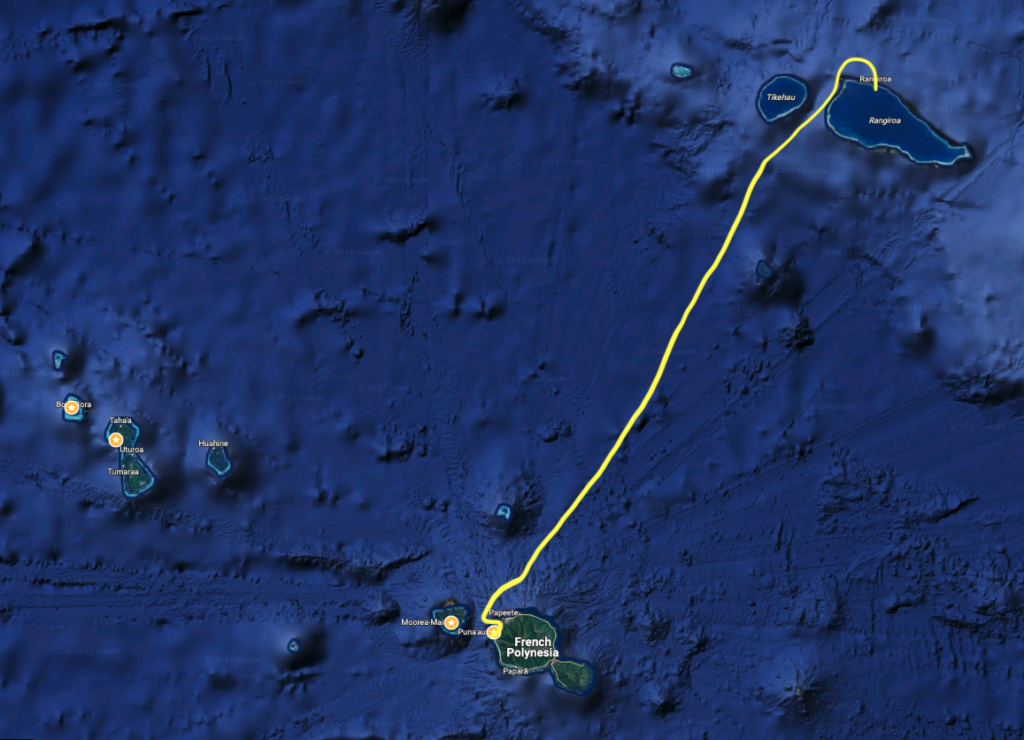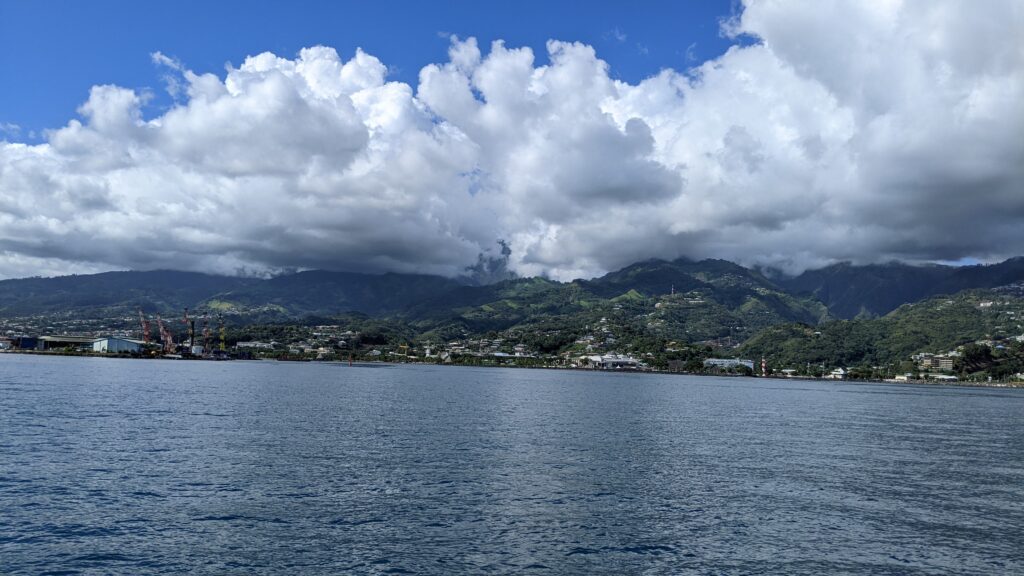Note: These events occurred in July 2022 but I am writing this in Dec 2023.
Time marches on and, while we would love to have stayed in Rangiroa and the Tuamotus longer, we needed to move on. Our next port would be Tahiti, almost 210 nm to the southwest.

When we plan passages, our calculations are based on averaging 5 knots. We usually do 6+ knots, but planning on 5 gives us flexibility. At that speed, this would be a 42 hour passage which means two nights. We left Rangiroa late morning on July 15 when the current exiting the pass was not too strong. The winds were inconsistent, sometimes really nice at about 15 knots on the beam, but other times just a few knots so we did some motoring as well.
Early on July 17 we sighted Moorea, a tall volcanic island very close to Tahiti.

Shortly after sighting Moorea, Tahiti appeared, about 15 nm to the east.

Like most of these islands, Tahiti has a coral reef surrounding most of the island. There is a large gap in the reef in front of Papeete which is the main port and main city on Tahiti.

Papeete is the capital city of French Polynesia. The metropolitan area has 136k residents which is about half of all residents of French Polynesia.

Papeete Marina is in a great location, in the heart of the downtown commercial area.

We were lucky enough to get a slip. You can’t reserve, just have to show up and see what’s available. Another catamaran had left minutes before we arrived so we pulled right in and tied up! Check-in at the marina office was quick and efficient but not inexpensive at $470 USD per week plus water (which we will use) and electricity (which we probably won’t need). It’s a nicely maintained marina with a good cruiser’s lounge, including nice bathrooms and showers. went back to Calista and took a long nap, after the two night passage. Tomorrow we will start exploring Papeete and the island of Tahiti.